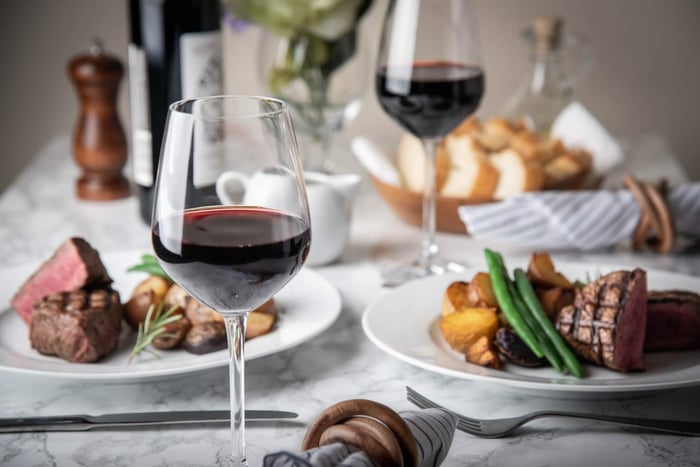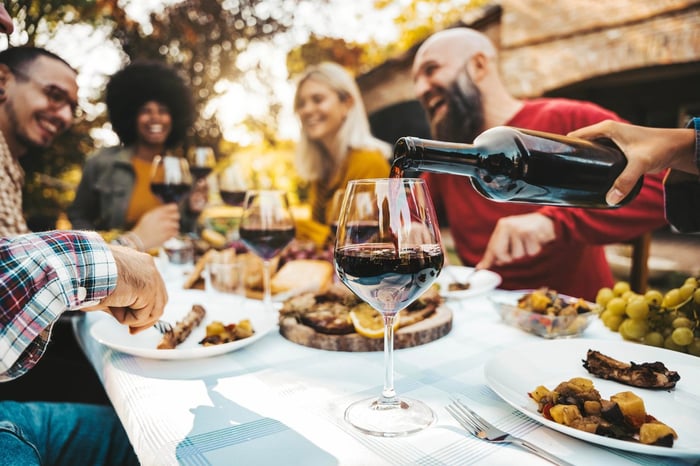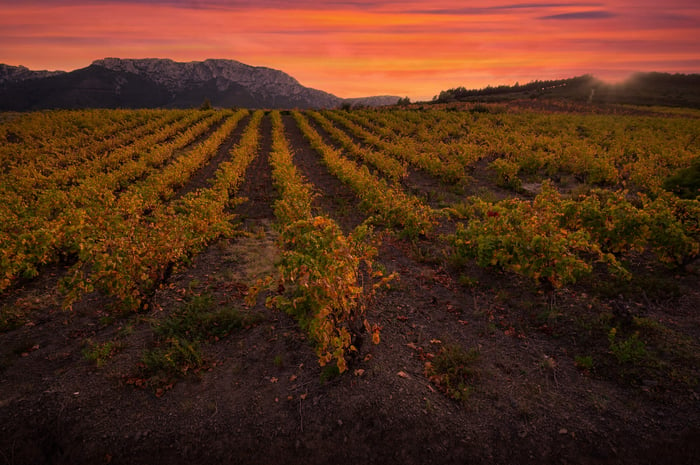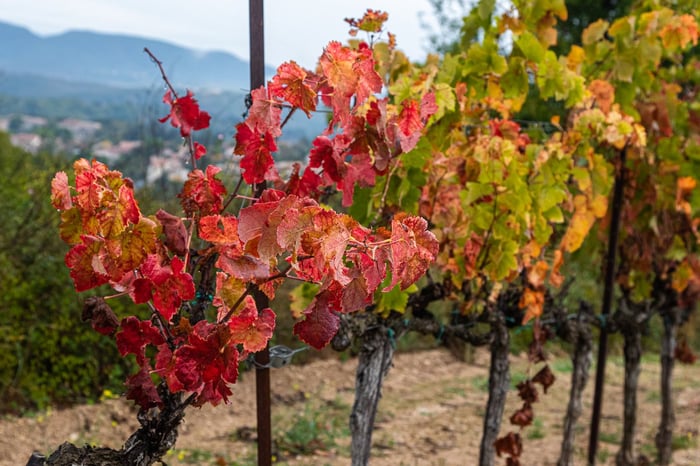
Rhône Wines, a Story of Two Halves
Table of Contents
Rhône wines come from an area of France between Vienne in the north and Avignon in the south. The Rhône river rises in the Swiss Alps and descends directly down through France to the Mediterranean. The region produces some of France’s grandest wines like Hermitage and Châteauneuf-du-Pape. But it’s also the source of some of the best value in the world. Personally I buy more wine from the Rhône than anywhere else.
The region can be divided in two. The north is cooler and dominated by Syrah. The south is warmer with Grenache predominating.
And while you might remember the old advertising slogan ‘Think red, think Côtes-du-Rhône’, the region produces some of the most underrated whites in France as well as some distinctive rosés, sweet and sparkling wines.
Let’s take a closer look.
Northern Rhône Wines
Hermitage, Côte-Rôtie and Cornas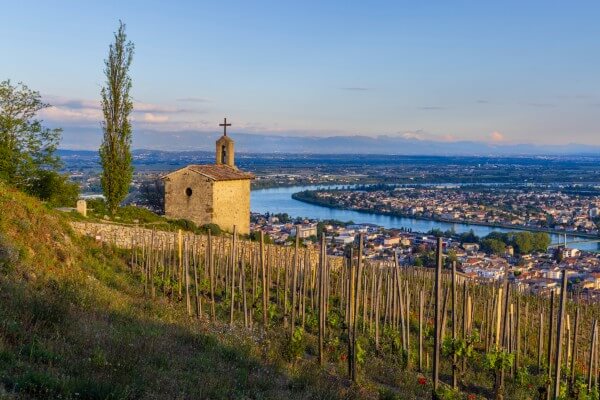 The Chapel of Saint Christopher, Tain l'Hermitage
The Chapel of Saint Christopher, Tain l'Hermitage
 The Chapel of Saint Christopher, Tain l'Hermitage
The Chapel of Saint Christopher, Tain l'HermitageThe vineyards Hermitage and Côte-Rôtie are both on steep slopes down to the Rhône river and have long been considered some of France’s greatest and longest-lived reds. Hermitage is usually made from 100% Syrah though the rules allow a percentage of white grapes, Marsanne and Roussanne, to be added. Côte-Rôtie is made from Syrah often with another white grape Viognier added. Both wines combine power with fragrance and elegance with Hermitage usually the more muscular of the two. The latter usually needs at least 10 years to show its best whereas Côte-Rôtie can be accessible at a younger age.
Cornas is rather different. Though made from the same variety, Syrah, it’s meaty and intense, often with flavours of black olive, rosemary and leather. It needs plenty of time in bottle and suitably hearty food to bring out its best.
St. Joseph and Crozes Hermitage
The three wines above tend to be expensive. If you like perfumed Syrah then St. Joseph and Crozes-Hermitage can provide some of the magic at a much lower price. The grapes are grown on flatter land not far from the more famous wines. Also some of the region’s top producers like Stéphane Ogier make what used to be called vin de pays. Look for IGP Collines Rhodaniennes on the label - it means you’re getting a baby Côte-Rôtie or Condrieu.
White wines of the Northern Rhône
The Northern Rhône also produces white wines. Hermitage blanc is made from Roussanne and Marsanne. It’s a nutty, lemon peel-tinged white that while drinkable young, can blossom into something sublime after years in bottle. Crozes-Hermitage white is similar in a younger-drinking style.
Perhaps the greatest of all white Rhône wines is Condrieu, a heady perfumed wine bursting with apricots and orange blossom made from 100% Viognier. It tends to be very expensive but you can buy IGP wines from Condrieu producers that offer some of the magic at a more reasonable price. Try producers like the biodynamic Domaine des Amphores.
Domaine des Amphores, "La Côte" 2020, Condrieu

£49.50
There are not many wines from Condrieu, the growing area is no larger than 120 hectares. Finding an organic wine is a needle in a...… read more
And finally there’s an all white appellation, Saint-Péray, which produces mainly champagne-method sparklers from Roussanne and Marsanne as well as still wines.
Southern Rhône Wines
The landscape of the Southern Rhône is more gently undulating compared with the sheer slopes of the north. The climate is significantly warmer and culturally you are now in Provence. This is Grenache country producing ripe, smooth, alcoholic wines often with a pronounced herbal scent.
Châteauneuf-du-Pape
The big name in the Southern Rhône wines is Châteauneuf-du-Pape. This is where the appellation controlee system was born in 1931 as a way of protecting the reputation of its wines against fraudsters. The name means new castle of the popes, a reference to a time when the papacy was in Avignon.
Grenache predominates but 13 grape varieties can be used here. Some wines, like Château de Beaucastel, use all of them whereas others are 100% Grenache. You can drink Chateauneuf young but it's worth keeping for five years minimum for the full experience. Try Domaine Tour Saint Michel, Cuvée des Deux Soeurs.
There’s also some whites made from a variety of grape varieties like Bourboulenc, Marsanne, Roussanne and Grenache Blanc. These are full, alcoholic wines that need food to bring out their best and can age for decades.
Côtes-du-Rhône and Côtes-du-Rhône Villages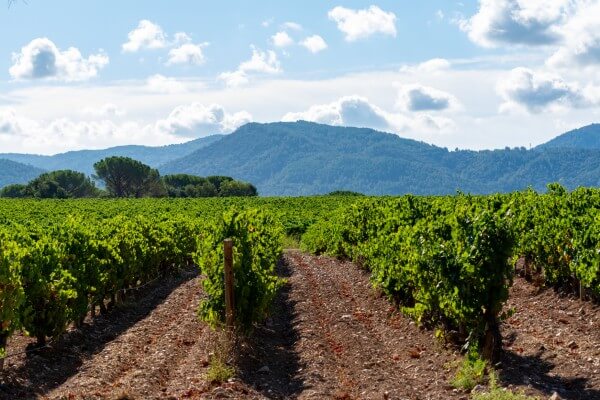 Vineyards in Côtes-du-Rhône
Vineyards in Côtes-du-Rhône
 Vineyards in Côtes-du-Rhône
Vineyards in Côtes-du-RhôneChâteauneuf-du-Pape is the king of the Southern Rhône but there are dozens of other appellations worth trying. There’s an easy to understand scale of quality. The simplest wines are labelled Côtes-du-Rhône. Next up are Côtes-du-Rhône Villages from better quality villages which have to follow more stringent rules on things like yields. Sometimes you will see the name of a specific cru attached to these wines like Plan-de-Dieu which are a further step-up.
The Cotes du Rhône dream is for a village to be promoted to standalone AOC - this is like reaching the Rhône wines equivalent of the Premier League. Lirac was the first cru to achieve this back in 1947 with Laudun the most recent in 2024. A round of applause for little Laudun!
The predominant red grape is Grenache followed by Syrah, Mourvedre, Cinsault and Carignan plus more obscure varieties like Counoise.
Cotes–du-Rhônes come in three colours. The whites made from a range of grapes including Grenache Blanc, Clairette and Viognier are fast improving offering something a little different in a world of Pinot Grigio and Sauvignon Blanc.
Domaine Maby "Variations" 2022, Rhône

£14.50
A supple and refreshing organic blend of Grenache, Syrah, Mourvèdre and Carignan, from 50-year old vines. Like all of Richard Maby's range, the name referrs...… read more
Other Southern Rhône crus
There are now 10 crus of the Southern Rhône: Châteauneuf-du-Pape, Lirac, Vacqueyras, Gigondas, Rasteau, Cairanne, Beaumes de Venise, Lirac, Tavel and Laudun. We won’t look at all of them, just some that you will see the most often. Many producers make wines in more than one appellation. As in the Northern Rhône look out for IGP wines or Côtes-du-Rhônes from producers of grander appellations like Châteauneuf-du-Pape producer Maucoil which can offer a lot of quality at a more reasonable price.
Tavel
France’s first rosé appellation. The wines made largely from Grenache and Cinsault are nothing at all like Provence pinks, they’re actually more like light reds. Lightly chill a bottle and they’re brilliant with spicy food, grilled meats, tomato-based dishes, ratatouille or sardines.
Domaine Maby "Prima Donna" 2024, Tavel

£19.50
Tavel is renowned as a deeply coloured rosé from the Southern Rhône. The antithesis of pale Provence rosé, this is a fruit forward, full-bodied, age-worthy...… read more
Lirac
One of the oldest appellations in France. It produces red, white and pink including a deeply-coloured rosé that’s close to Tavel in style. Lirac reds offer a lot of the style of Châteauneuf-du-Pape - indeed some producers like Richard Maby produce both as well as some Tavel. The whites tend to be herbal and full-bodied.
Gigondas
Gigondas was promoted to cru status in 1971. It produces some of the best wines in the region which tend to have an elegance and a perfume about them. Mainly Grenache though Syrah and Mourvedre are popular additions to the blend. 99% of production is red though a tiny amount of rosé is also produced here.
Vacqueyras
Another region that produces three different colours of wine though the vast majority is red. This became an appellation in its own right in 1990. The name comes from the Latin Vallis Quadereria - meaning ‘valley of the stones’. The reds are bold and ripe and while good for drinking young have plenty of staying power.
Rasteau
A red wine appellation that achieved cru status in 2010. It was previously famous for its vin doux naturel, port-style wines but today most of the product is dry. Rasteau typically makes muscular, chunky wines that in the past may have been a little rustic. However, things are changing fast with leading producers like Domaine de la Font de Notre Dame making increasingly elegant wines.
Domaine La Font de Notre Dame, Rasteau 2019, Rhône

£16.65
Rasteau’s elevation to cru status in 2010, solely for its highly regarded dry red wines was widely welcomed. Domaine la Font de Notre Dame, a...… read more
Beaumes-de-Venise
An area famed for its sweet Muscat Beames-de-Venise which also produces good reds which you rarely hear about.
Other Rhône appellations
Outside of Côtes-du-Rhône and the crus of the Northern and Southern Rhône there are other appellations within the region. Here are a few of them:
Clairette de Die/ Crémant de Die
Clairette de Die is a methode ancestrale, or pet nat as it’s now fashionably called, sparkling wine which confusingly is usually made from Muscat rather than Clairette. To make matters even more complicated, there’s also a Cremant de Die, a champagne-method wine, that is made from Clairette. Some top marketing there.
Ventoux
The region around the infamous Mont Ventoux will be familiar to cycling fans. All three colours are made here. There are some ambitious producers making wines that rival more famous names like Gigondas. It can be a source for some incredible bargains even by Rhône standards.
Luberon
Far to the south and east, you’re in la vraie provence now. In fact, Ridley Scott’s A Good Year starring Russell Crowe and based on a novel by Peter Mayle was filmed here. You will find lots of everyday wines here but there are a few standout estates.
Costières de Nîmes
In the south western corner of the Rhône around the city of Nimes, this is where the Rhône butts up against the Languedoc with the wines having some of the character of both areas. Red, white and rosé are all made here and there are a number of excellent producers like the organic and biodynamic Château Font Barriele.
Font Barriele "Les Vignes d'Héloïse" Rouge 2021, Costières de Nîmes

£12.65
Costières-de-Nîmes is a great area of the Rhone Valley which is often overlooked in favour of the better known Cotes-du-Rhone appellation. Well, that's all the...… read more


